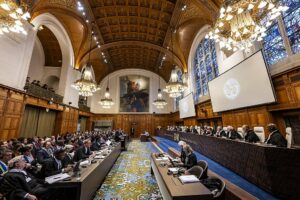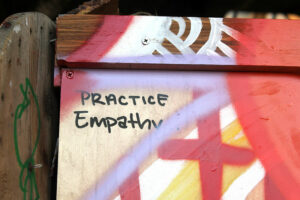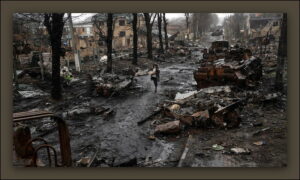African art in the British Museum. Photo by Paul Hudson via Flickr. Used under CC BY 2.0.
The author of ‘Decolonize Museums’, Shimrit Lee, assembles a list of essential reading on the past, present and future of museums.
To someone following the news these days, it would seem that the Western museum has suddenly become a battleground. In the past couple of months alone, young activists, desperate to draw attention to the global climate crisis, flung tomato soup on Vincent van Gogh’s “Sunflowers” at the National Gallery and then glued their hands to the wall. The Smithsonian’s National Museum of African Art officially transferred ownership of several stolen Benin bronzes back to their rightful home in Nigeria. The French government returned to Algeria the skulls of 24 people, which had been stored for decades in Paris’ Museum of Mankind. More than 70 trafficked antiquities were confiscated from New York’s Metropolitan Museum of Art and returned to their native countries of Italy and Egypt.
The headlines continue to roll, and mainstream media is increasingly catching on. Recently, even John Oliver, host of Last Week Tonight on HBO, dedicated an episode to the shady practices of Western museums, roasting the Metropolitan Museum’s criminal acquisition practices as well as the British Museum’s vast holdings of patrimony from former colonies.
Yet the struggle over and within museums didn’t just spring up overnight. It goes back decades and has generated extensive scholarship. When I first started writing Decolonize Museums, I nearly drowned in the immensity of available source material. It was the first week of the pandemic, and already my brain (and my desk) were overflowing with interdisciplinary texts on the past, present, and future of museums.
I’ve assembled some of the most essential reading here.
The Past
I decided to start my research in a familiar place, with Tony Bennett’s The Birth of the Museum: History, Theory, Politics—a book that left a big impact on me when I first read it in graduate school. Bennett exposes the museum as a tool of social engineering carefully crafted by 19th-century elites invested in maintaining the status quo during the Industrial Revolution. His detailed analysis traces the history of the Western museum alongside that of fairs, international expositions, and department stores—all sites of exhibition in which celebrations of national pride, wealth, and above all, empire, were designed to mute social ills. Beyond offering a comprehensive history of the museum, the book teases out the centrality of museums as sites that have always had ideological agendas—whether it be disciplining the lower classes or presenting colonialism to European audiences as a glorious endeavor.
While Bennett’s work traces how objects stolen from colonies served as lessons for European audiences, Ariella Aïsha Azoulay’s book Potential History: Unlearning Imperialism considers how these extractions impacted the communities from which objects were violently taken. While I found her text to be largely inaccessible at times (it is, after all, 600 pages of daunting academic prose), her second chapter in particular gave me a theoretical basis for understanding the intimate relationship between art and plunder. I was moved by her insistence on a “pre-imperial time,” in which objects—now appreciated as “art” in various Western museums—once played a central function in the material worlds of colonized communities. The dispossession of these objects directly contributed to the destruction of those worlds.
Dan Hick’s The Brutish Museums: The Benin Bronzes, Colonial Violence and Cultural Restitution magnifies the scale of such destruction—both in terms of the immense African death toll as well as the erasure of sacred cultural heritage. He contextualizes the plunder of the Benin Bronzes, which were ransacked by British soldiers from present-day Nigeria in 1897, as part of corporate and military interventions in the region. Perhaps most illuminating was Hick’s discussion of imperial humanitarianism, one of many mythologies that served to legitimize colonial intervention—whether it be Enlightenment values of universalism that fueled the assault on the Kingdom of Benin or notions of liberal multiculturalism that were wielded by the US government in the buildup to the Iraq War.
The Present
Zoé Samudzi’s article “Reparative Futurities: Thinking from the Ovaherero and Nama Colonial Genocide” in The Funambulist brought an additional layer of analysis to my understanding of how colonial destruction in the past continues to haunt the present. In her discussion of the American Museum of Natural History’s refusal to return the human remains of Ovaherero and Nama victims of German concentration camps in Namibia, Samudzi offers a notion of decolonial reconciliation that is bound up in concepts of time. For many ethnic groups, the transition of indigenous dead from this life to the next cannot take place without a proper burial of these remains. Samudzi’s analysis helped me to fully grasp how the incarceration of ancestral remains in museums is not only a political issue, but a spiritual one as well.
Once these objects—or remains—have ended up in the museum’s collection, how are they displayed in a way that obscures their origins? What curatorial decisions enfold the violence of conquest and colonialism into a supposedly neutral aesthetic, one that ultimately upholds a glorification of empire? Alice Procter’s book The Whole Picture: The Colonial Story of the Art in Our Museums & Why We Need to Talk About It helped me to answer that question. For years, Procter has led guerrilla-style tours through major cultural institutions in London, asking participants to consider how colonialism has ideologically and financially constructed major national collections. Her book mirrors the structure of such a tour, bringing her reader through museum collections and interrogating the stories that curators tell—or fail to tell—about the various objects found within them.
I was particularly persuaded by Procter’s use of the “contact zone” as a theoretical framework for examining the ways in which the museum represents a space of encounter between colonizer and colonized—a slippery negotiation of asymmetric power that is bound up in the objects themselves. Much like the BBC’s podcast The Museum of Bad Vibes, which narrates the restless spirits of objects held in British museums, Procter amplifies the myriad stories that exist within any given artifact. She peels back layer upon layer of each case study like an onion, revealing stories of resistance, negotiation, and multiplicity that traditional museum catalogs would prefer to bury.
The Future
Even a radical reframing of the colonial origins of museum collections does not necessarily result in the type of “decolonization” present in the title of my book. Amy Lonetree’s Decolonizing Museums: Representing Native America in National and Tribal Museums helped me fully grasp the hurdles involved in transforming museums from sites of oppression into sites of healing. As a Ho-Chunk scholar, Lonetree documents her own long-term engagement as a museum professional. In one chapter, she critiques the inaugural exhibitions of the Smithsonian’s National Museum of the American Indian, which, despite Native involvement in the curatorial process, failed to present a coherent understanding of the violence of colonialism and its ongoing impacts. Her critique of these pitfalls provided me with a lens through which to view other museums that in recent decades have served up empty promises of decolonization.
I read Lonetree’s work alongside that of Sumaya Kassim, whose article “The Museum Will Not Be Decolonized” offered another illuminating firsthand account of failed decolonizing efforts. Writing about her experience as a woman of color brought in to co-curate a decolonial exhibition at the Birmingham Museum and Art Gallery, Kassim details the inadequate pay, tokenization, and censorship that she faced. This was a key message I wanted to communicate in my own writing: that diversity is not the same as decolonization, and efforts at inclusion may even be used to manage or avoid a necessary radical overhaul.
Aruna D’Souza’s Whitewalling: Art, Race and Protest in 3 Acts spotlights groups that are demanding such institutional change—specifically Black audiences who have used protest as a means to change racism within the art world. She takes a journalistic tone, bringing together activist accounts, social media posts, and her own experience as an active participant in major art world controversies. I was completely drawn in from her very first chapter, which details the public outcry surrounding the display of Dana Schutz’s racially insensitive painting of the mutilated body of Black teenager Emmett Till at the 2017 Whitney Biennial. The chapter, while delving into every twist and turn of the debacle, also gave me a comprehensive view into the failures of liberal institutions like the Whitney Museum—described by its director Adam Weinberg as a “safe space for unsafe ideas.”
D’Souza’s book was on my mind as the Black Lives Matter movement exploded in 2020, just as I was completing work on the first chapter of my book. As the protests expanded, so did an urgent, nationwide conversation surrounding racial injustice—and the ways in which injustice in the museum has always mirrored, and in some cases actively perpetuated, injustice in the world at large.
All of the authors mentioned here understand this inextricable connection, which has always positioned the museum as a site of struggle. I invite those who wish to take a deeper dive into this struggle to read my book and get lost in the bibliography.
About
Shimrit Lee is a writer, educator, and curator based in Philadelphia working at the intersection of visual culture, performance, and critical security studies.
This post is cross-posted from Africa Is a Country.
More on developmenteducation.ie

Urgently needed and timely new resource from Afri
Ciara Regan reviews Afri’s latest resource, Sowing Seeds of Peace, for post primary teachers which is adaptable and immediately useful across a range of school subjects.

It’s international women’s day. Don’t forget to tag us now that you feel #prettypowerful
From getting out to vote and entertaining two children off school due to it being a make-shift polling station, Ciara Regan reflects on international women’s day 2024.

Punching above its weight
Juan Acevedo-Ossa explores South Africa’s case against Israel as the latest example of its ability to act as a normative superpower, exceeding the great powers in shaping global moral discourse.

Empathy in a Divided World – workshop
Join us for this online session Empathy in a Divided World led by Brighid Golden to discuss how educators can respond to the challenges of selective empathy, both for ourselves personally and with others in our different settings.

What does Palestine have to do with Africa?
How does Israel’s current aggression on Gaza relate to Africa’s own history of political violence in Uganda and Africa?

‘What life is this?’: Escaping Ukraine’s occupied territories
From food shortages to informants, eight evacuees talk about life in Russian-occupied towns

